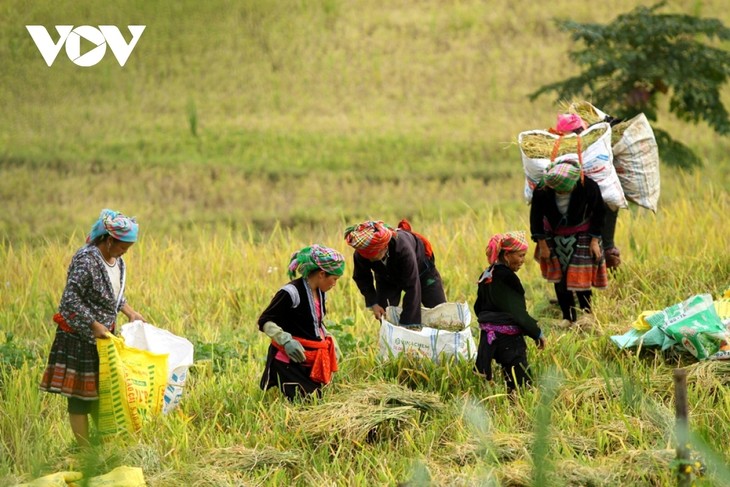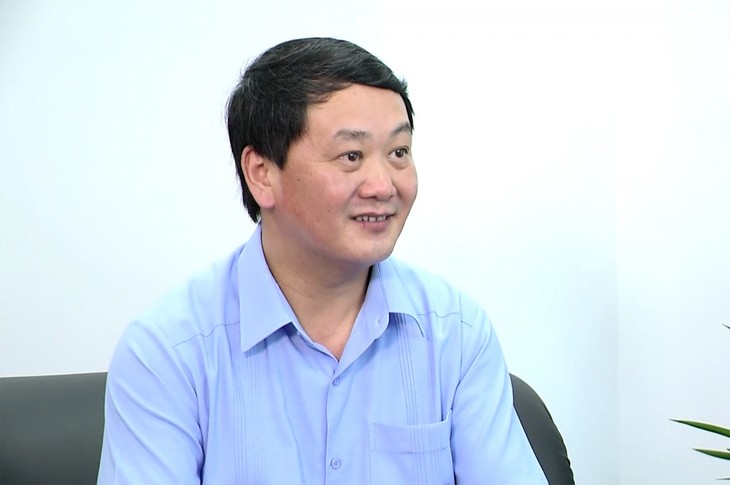(VOVWORLD) - An additional 10 million people will benefit from the Government’s social protection and poverty reduction policies and programs between 2021 and 2025, according to the Multi-Dimensional Poverty Report 2021. Since 2020, Vietnam has been carrying out a program of socio-economic development for ethnic minority areas. After 2 years of implementation, the program has realized its slogan “No one is left behind”.
 The Vietnamese government adopted a separate national target program for ethnic minority areas in 2020, which is carried out in two phases in communes and hamlets where ethnic minority households make up at least 15% of all households. The Vietnamese government adopted a separate national target program for ethnic minority areas in 2020, which is carried out in two phases in communes and hamlets where ethnic minority households make up at least 15% of all households. |
Lo Thi Da’s family in the north central province of Thanh Hoa was given seedlings and breeders by the local poverty reduction program.
5 years later, Da has hundreds of cattle and poultry and an orchard, which generates thousands of dollars per year and has made the family well-off.
“Thanks to the local administration’s support, I feel less worried. My animal husbandry and farming are doing well. Though I have no capital, I’ve been given seedlings, breeders, and new farming techniques,” said Da.
Choosing a household production model and replicating it to other areas is how Thanh Hoa province has implemented the program.
Ha Van Thuy, Deputy Secretary of Quan Hoa district’s Party Committee, underscored the necessity changing the old way of thinking and focusing on communications, mobilization, and Party members setting an example for others to follow.
“In the past, support was in the form of free gifts. But now people must contribute something to the program. Only those who meet certain criteria will be selected to join the program,” Thuy explained.
He added that direct financing has been reduced to focus investment resources on regional and socio-economic development towards sustainable production development.
The national target program for ethnic minority areas was adopted by the National Assembly in 2020 with a capital allocation plan approved in May this year.
The large program targets more than 3,400 poor communes in 51 provinces with ethnic minority areas in three strategic regions - Southwest, Central Highlands, and Northwest.
 Minister and Chairman of the Committee for Ethnic Minority Affairs Hau A Lenh. (Photo: VOV) Minister and Chairman of the Committee for Ethnic Minority Affairs Hau A Lenh. (Photo: VOV) |
According to Minister and Chairman of the Committee for Ethnic Minority Affairs Hau A Lenh, this program involves 10 ministries and sectors and comprises 10 projects and 14 sub-projects with 36 components. It covers 36 policies, including ones which remain valid from the previous period.
“So it’s extremely complicated to integrate old and new policies and build a system of documents to regulate and guide the implementation of the program. This is the first time that the Party and State have dedicated a separate resource for such a big program so it’s necessary to review it again and again,” said Lenh.
Although the state budget is facing many difficulties, the National Assembly and the Government have doubled investment resources for poverty reduction compared to the previous period, and implemented the National Target Program on Sustainable Poverty Reduction in a comprehensive, multi-dimensional way that minimizes the number of re-deprivations.
More conditions have it easier now for poor households to access basic social services in rural, mountain and island areas, facilitating economic growth, ensuring social security and social welfare, and fulfilling the goal of reducing the poverty rate.
Thanks to the State's programs and a strong response by the Vietnam Fatherland Front, organizations, and individual donors, Vietnam’s poverty rate has decreased 1.43% per year, 650 communes and 1,200 hamlets have escaped from extreme financial hardship, 170,000 charity houses have been built; and ethnic minority and poor households have full health insurance.
A social security relief package worth 2.6 billion USD was approved to overcome the consequences of the COVID-19 pandemic; thousands of tons of rice and millions of USD from the central budget reserve have been used to support people in the central region who suffered great losses in recent floods and storms.